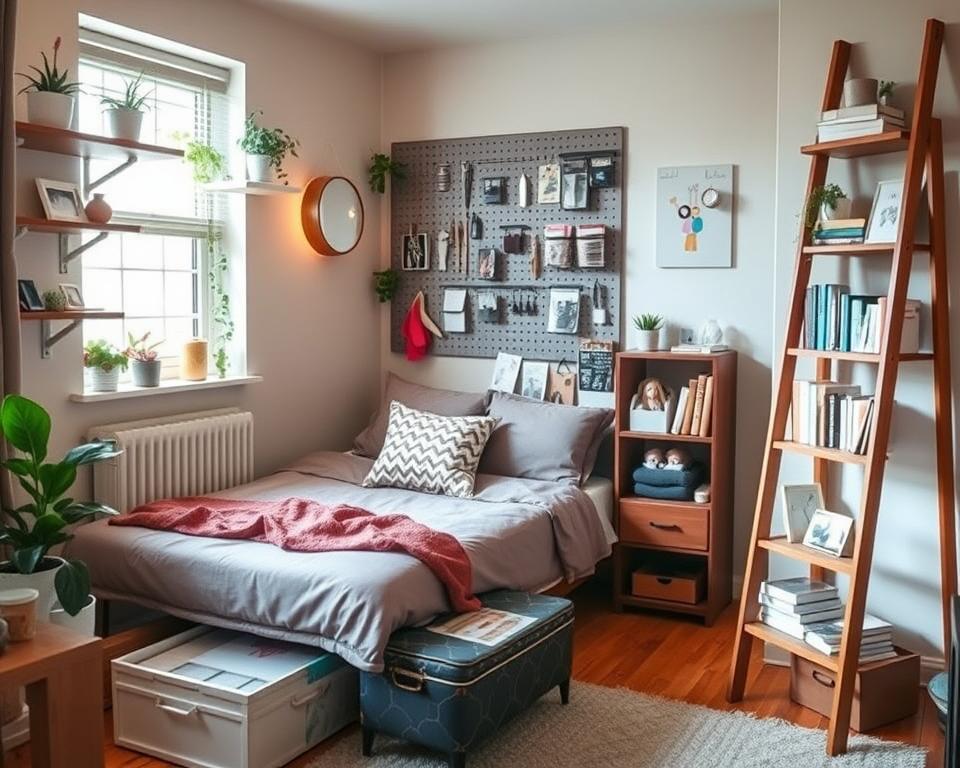Did you know 92% of DIY fans struggle to find good woodworking plans? Teds Woodworking fixes this by offering over 16,000 professional designs for all skill levels.
Whether you’re starting with your first wooden shelf or looking for complex furniture, Teds Woodworking is your go-to. It has plans for every skill level, opening up a world of woodworking possibilities for you.
This platform is special because it gives you lifetime access to woodworking projects without any ongoing costs. You get detailed plans, step-by-step guides, and material lists to help you bring your ideas to life.
What sets Teds Woodworking apart is its dedication to helping woodworkers of all levels. With 150+ video tutorials and custom plan options, you have everything needed to take your hobby to the next level.
Now, you can get this amazing resource for just $67, a huge discount from the usual $297. But, this offer won’t last long, so act fast!
What Makes Teds Woodworking Plans Stand Out
Explore the world of top-notch woodworking blueprints that change your DIY game. Teds Woodworking has a vast collection of 16,000 unique project ideas. These plans are perfect for all skill levels and creative dreams.
Professional-Grade Blueprint Quality
Your woodworking journey needs precision. Teds Woodworking offers blueprints that are accurate and clear. Each design includes:
- Detailed schematics
- Precise cutting measurements
- Material waste reduction strategies
“Precision is the key to successful woodworking projects” – Master Craftsman
Step-by-Step Visual Instructions
Woodworking tutorials can be tricky, but not with Teds Woodworking. It offers clear visual guides for each project effortlessly. Both beginners and pros will love the:
- Easy-to-follow visual instructions
- 150 premium tutorial videos
- Skill progression from simple to advanced projects
Comprehensive Material Lists
No more guessing about materials. Each blueprint comes with a detailed list of tools and materials needed. This saves time, cuts down on mistakes, and makes sure you’re ready for any project.
With Teds Woodworking, you get more than just plans. You get a full woodworking education that boosts your creativity and skill.
Get Started with DIY Woodworking Projects
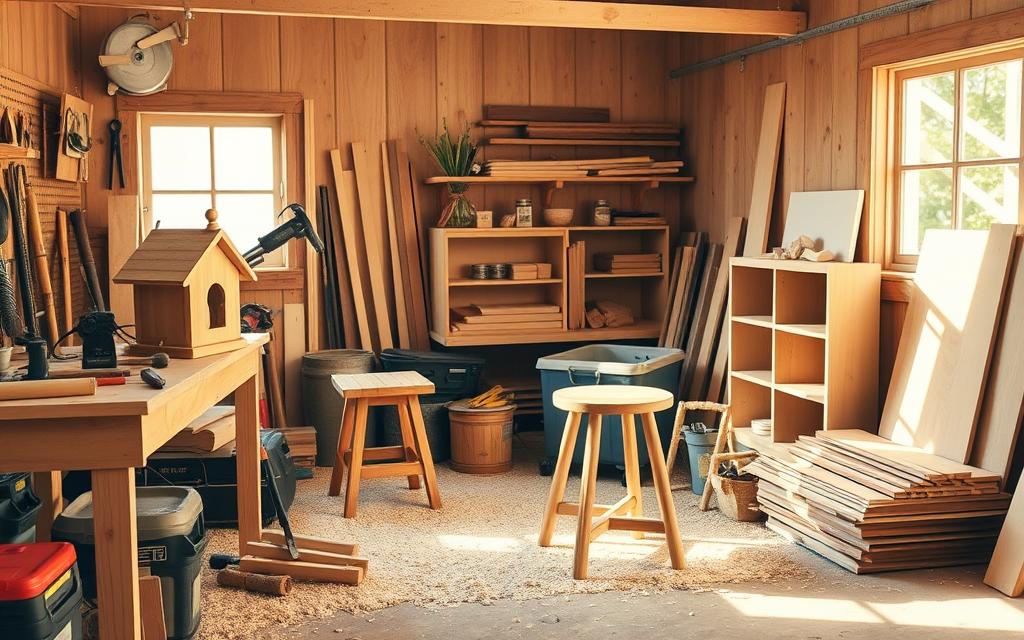
Starting woodworking can seem scary, but with the right plans, you can become great. It’s all about starting small and getting better with each project.
“Every master woodworker started exactly where you are right now – as a beginner with a passion to create.” – Master Woodworker
When you first start woodworking, choose projects that are easy and fun. Here are some tips for beginners:
- Start with simple projects that fit your skill level
- Get the basic tools before trying harder projects
- Use detailed plans that give clear steps
- Practice basic skills before moving on
Ted’s Woodworking has over 16,000 detailed plans to help you start. These plans include:
- Exact lists of materials needed
- Step-by-step cutting guides
- Accurate measurements
- Visual help for each step
Remember, every expert was once a beginner. Your woodworking journey starts with that first project!
Essential Tools and Materials for Success
Starting woodworking means you need the right tools to make your ideas real. Whether you’re new or have lots of experience, the right tools are key to success.

Knowing the essential tools is the first step to making your wood crafts come to life. Your workshop should have a mix of power tools and hand tools. They should work well together.
Must-Have Power Tools
- Circular saw for precise cutting
- Power drill for creating holes and driving screws
- Random orbital sander for smooth finishing
- Miter saw for accurate angle cuts
- Table saw for straight, consistent cuts
Basic Hand Tools Collection
- Hammer for general assembly
- Chisels for detailed work
- Measuring tape for precision
- Level for ensuring straight lines
- Wood clamps for holding pieces together
Quality Wood Selection Guide
Choosing the right wood is key for your woodworking projects. Different projects need different types of wood:
- Pine: Soft, affordable, great for beginners
- Oak: Durable, excellent for furniture
- Maple: Hard wood, perfect for cutting boards
- Cedar: Naturally resistant to decay
“The right tool and the right wood can turn a simple project into a masterpiece.” – Woodworking Expert
Beginner-Friendly Woodworking Project Ideas
Starting with woodworking projects can feel scary for beginners. But, with the right help, you’ll soon feel more confident and skilled. Teds Woodworking has a wide range of projects for beginners that are fun and easy to learn.
- DIY Wooden Napkin Holder: A great first project using leftover wood or small hardwood pieces
- Hanging Wall Planter: Perfect for adding plants to small spaces
- Magnetic Knife Holder: A handy kitchen organizer
- Custom Address Number Sign: A useful and decorative home addition
- Mobile Phone Stand: A mix of tech and woodworking
“Every master was once a beginner. Start small, dream big!” – Woodworking Wisdom
These projects are made to teach basic skills without being too hard. You’ll learn how to cut accurately, use glue, and finish projects. Plus, you’ll make something special.
With Teds Woodworking plans, you get clear instructions that make complex tasks easy. Each project takes only a few hours and needs just a few tools. This makes woodworking fun and easy for everyone.

Woodworking is a rewarding and creative hobby that allows you to build functional and beautiful items with your own hands. For beginners, starting with simple projects is key to building confidence, learning essential skills, and gaining familiarity with tools and materials. Below are beginner-friendly woodworking project ideas that are easy to tackle, require minimal tools, and provide a sense of accomplishment.
1. Wooden Coasters
Why It’s Beginner-Friendly:
- Simple design with minimal cutting and shaping.
- Great for practicing sanding and finishing techniques.
- Can be customized with stains, paints, or woodburning designs.
Materials Needed:
- Small pieces of hardwood (e.g., maple, cherry, or walnut).
- Sandpaper (various grits).
- Wood finish (e.g., varnish, oil, or wax).
Skills Learned:
- Measuring and cutting to size.
- Sanding for a smooth finish.
- Applying wood finishes.
Tips:
- Use a miter saw or hand saw to cut squares or circles.
- Experiment with different wood types and finishes for variety.
2. Picture Frame
Why It’s Beginner-Friendly:
- A classic project that teaches basic joinery techniques.
- Can be made with scrap wood or inexpensive lumber.
- Allows for creativity in design and decoration.
Materials Needed:
- 1×2 or 1×3 lumber (pine or poplar works well).
- Wood glue.
- Nails or brads (optional).
- Sandpaper and wood stain or paint.
Skills Learned:
- Cutting precise angles (45-degree miters).
- Using wood glue and clamps.
- Finishing techniques.
Tips:
- Start with a simple rectangular frame before attempting more complex shapes.
- Add a glass insert or backing board for functionality.
3. Wooden Plant Stand
Why It’s Beginner-Friendly:
- Minimal cuts and assembly required.
- Perfect for small spaces and indoor plants.
- Encourages creativity in design and height variations.
Materials Needed:
- 1×4 or 1×6 lumber.
- Wood screws or nails.
- Sandpaper and wood finish.
Skills Learned:
- Measuring and cutting to length.
- Assembling with screws or nails.
- Balancing proportions for stability.
Tips:
- Use a drill with a countersink bit to prevent splitting.
- Customize the stand with different heights or tiers.
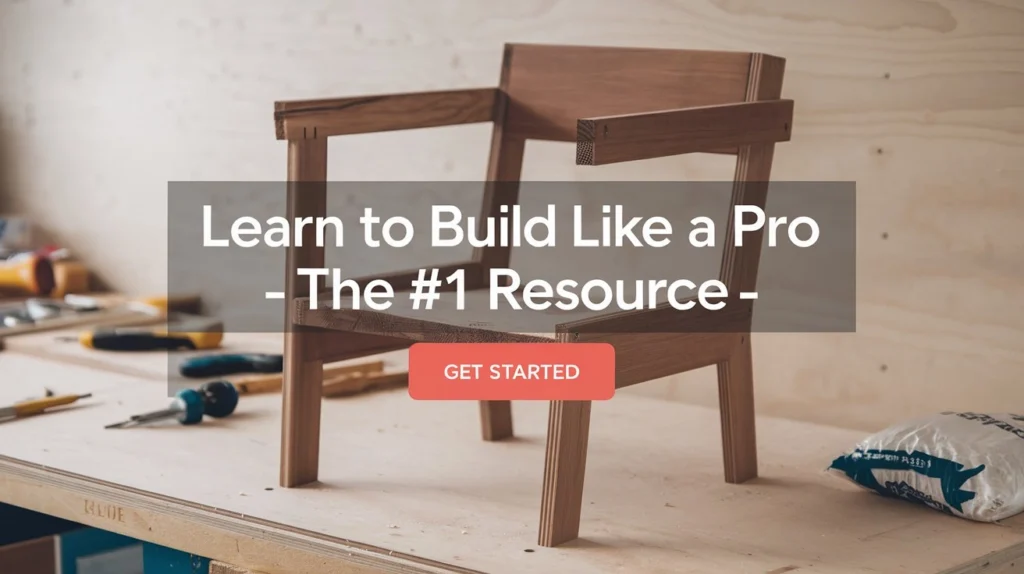
4. Simple Shelf
Why It’s Beginner-Friendly:
- Functional and practical for any room.
- Requires only basic tools and materials.
- Easy to scale up or down depending on your needs.
Materials Needed:
- 1×8 or 1×10 lumber for the shelf.
- Brackets or cleats for mounting.
- Sandpaper and wood finish.
Skills Learned:
- Cutting straight edges.
- Mounting shelves securely.
- Sanding and finishing wood.
Tips:
- Use wall anchors if mounting into drywall for added stability.
- Stain or paint the shelf to match your decor.
5. Wooden Box or Storage Crate
Why It’s Beginner-Friendly:
- Versatile and useful for storage or decoration.
- Teaches basic box-making techniques.
- Can be scaled to any size.
Materials Needed:
- 1×4 or 1×6 lumber.
- Wood glue and nails or screws.
- Sandpaper and wood finish.
Skills Learned:
- Measuring and cutting boards to size.
- Joining pieces with glue and fasteners.
- Sanding for a smooth finish.
Tips:
- Add handles by drilling holes or attaching rope.
- Line the interior with fabric for a decorative touch.
6. Step Stool
Why It’s Beginner-Friendly:
- Practical and functional for everyday use.
- Introduces basic construction and stability concepts.
- Can be customized with paint or stain.
Materials Needed:
- 1×6 or 1×8 lumber.
- Wood screws.
- Sandpaper and wood finish.
Skills Learned:
- Cutting and assembling components.
- Ensuring stability and balance.
- Sanding and finishing.
Tips:
- Round the edges for safety, especially if children will use it.
- Add non-slip pads to the bottom for extra grip.
7. Cutting Board
Why It’s Beginner-Friendly:
- A small project that introduces working with food-safe materials.
- Focuses on sanding and finishing for a smooth surface.
- Makes a great gift or personal kitchen tool.
Materials Needed:
- Hardwood (e.g., maple, walnut, or cherry).
- Food-safe mineral oil or beeswax finish.
- Sandpaper (fine grits).
Skills Learned:
- Cutting and shaping wood.
- Sanding to a smooth, splinter-free finish.
- Applying food-safe finishes.
Tips:
- Avoid using softwoods like pine, as they can absorb bacteria.
- Personalize with engravings or patterns.
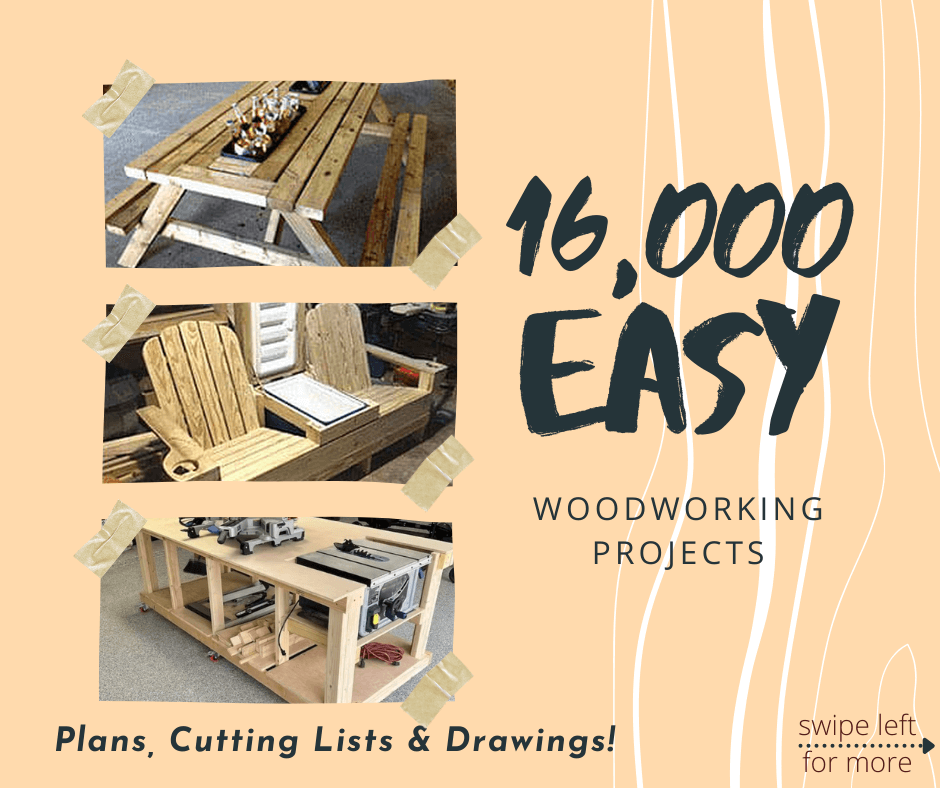
8. Birdhouse
Why It’s Beginner-Friendly:
- Fun and creative project for outdoor use.
- Teaches basic assembly and roof construction.
- Encourages experimentation with shapes and sizes.
Materials Needed:
- 1×6 or 1×8 lumber.
- Wood screws or nails.
- Sandpaper and paint or stain.
Skills Learned:
- Cutting and assembling panels.
- Creating a sloped roof.
- Adding functional elements like perches and ventilation holes.
Tips:
- Use weather-resistant wood or sealant for outdoor durability.
- Research birdhouse dimensions to attract specific bird species.
9. Wooden Tray
Why It’s Beginner-Friendly:
- Combines functionality with a touch of elegance.
- Introduces basic joinery and handle attachment.
- Can be customized with decorative finishes.
Materials Needed:
- 1×6 or 1×8 lumber.
- Small dowels or handles.
- Wood glue and screws.
- Sandpaper and wood finish.
Skills Learned:
- Cutting and assembling sides.
- Attaching handles securely.
- Sanding for a smooth, splinter-free surface.
Tips:
- Add felt pads to the bottom to protect surfaces.
- Use contrasting wood types for handles to add visual interest.
10. Floating Shelves
Why It’s Beginner-Friendly:
- Sleek and modern design with minimal visible hardware.
- Teaches wall-mounting techniques.
- Requires only basic tools.
Materials Needed:
- 1×6 or 1×8 lumber.
- Floating shelf brackets or cleats.
- Sandpaper and wood finish.
Skills Learned:
- Cutting boards to size.
- Installing hidden brackets.
- Sanding and finishing.
Tips:
- Ensure the wall studs are located for secure mounting.
- Use a level to ensure the shelves are perfectly horizontal.
Tools You’ll Need for Beginner Projects
To get started with these beginner-friendly projects, you’ll need a few basic tools:
- Measuring Tape : For accurate measurements.
- Saw : A handsaw, jigsaw, or circular saw works well.
- Drill : For making holes and driving screws.
- Clamps : To hold pieces together while gluing or assembling.
- Sandpaper : For smoothing rough edges.
- Hammer or Nail Gun : For attaching small pieces.
- Safety Gear : Safety glasses, ear protection, and dust masks.
Starting with beginner-friendly woodworking projects is a fantastic way to develop your skills and gain confidence in the craft. These projects are not only simple and achievable but also practical and fun. As you complete each project, you’ll learn valuable techniques and gain a deeper understanding of how to work with wood.
Once you’ve mastered these basics, you can move on to more complex projects and explore advanced joinery, carving, and design. Remember, woodworking is as much about the journey as it is about the finished product—so enjoy the process and let your creativity shine!
Advanced Woodworking Designs and Techniques
Take your woodworking to the next level with Teds Woodworking’s advanced designs. Ready to push your limits or make professional projects? These techniques will boost your skills.
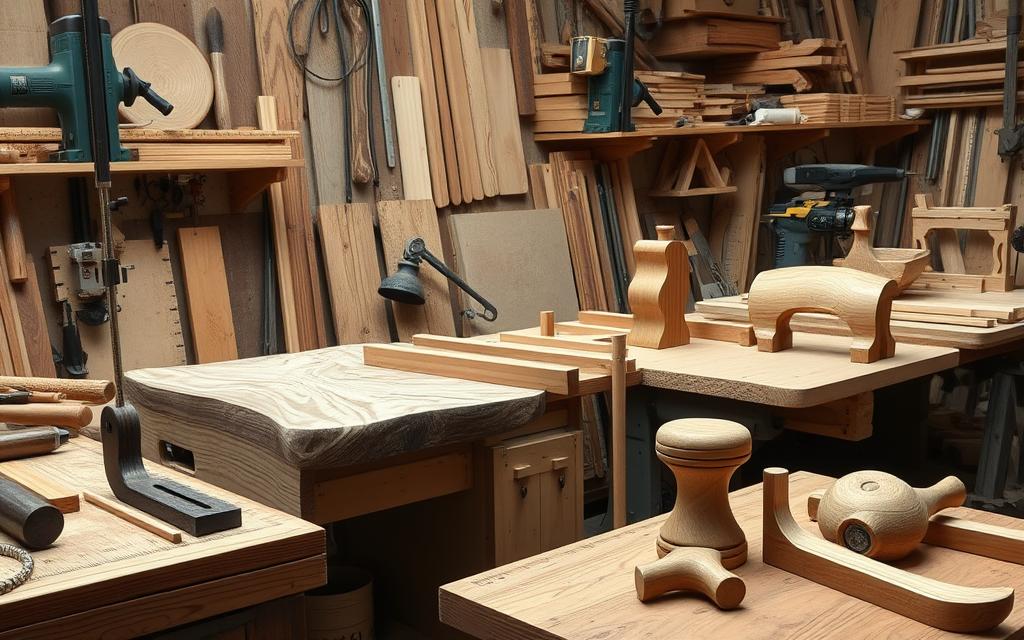
Mastering Joinery Methods
Getting precise in woodworking means mastering complex joinery. Teds Woodworking plans guide you through advanced connections. These make your projects stronger and more professional.
- Dovetail joints for exceptional strength
- Mortise and tenon connections
- Intricate finger joint techniques
Advanced Finishing Techniques
Turn simple wood into stunning art with advanced finishing. Learn top techniques to make your designs pop.
- French polishing for elegant surfaces
- Artistic wood distressing methods
- Complex staining approaches
“With Teds Woodworking, even complex techniques become accessible to dedicated craftsmen.” – Professional Woodworker
Creating Custom Furniture
Let your creativity shine by customizing Teds Woodworking plans. These plans help you bring your unique furniture ideas to life.
With 16,000 woodworking designs, you’ll always find inspiration. Teds Woodworking helps you grow your skills and make amazing pieces.
Maximize Your Workshop Space

You don’t need a big space to have a great workshop. With smart planning and creative ideas, even a small area can become a productive woodworking spot. The secret is to use every inch wisely with clever organization and DIY plans.
Smart storage is key to a better workshop. Here are some tips to save space:
- Install vertical wall storage for tools and materials
- Use fold-down workbenches that collapse when not in use
- Create custom tool cabinets with multiple compartments
- Implement overhead storage racks for less frequently used equipment
Your workshop layout should make things easy to get to and use. Teds Woodworking has over 16,000 plans with space-saving designs. These plans help you make areas that do more than one thing.
“A well-organized workshop is the foundation of successful woodworking projects.” – Professional Woodworker
Be creative with your space. Use floating shelves, under-bench storage, and wall-mounted tool holders. A small workshop can be just as good as a big one with the right setup.
Tips for Project Planning and Execution
Starting a woodworking project needs careful planning and smart execution. Whether you’re new or experienced, learning project management can make your woodworking journey rewarding.

Reading Woodworking Blueprints Like a Pro
Understanding woodworking blueprints is key for any project. These detailed drawings might look tough at first. But they guide you to success. Here’s what to look for:
- Detailed measurements and scale
- Specific material recommendations
- Cut diagrams and joinery instructions
- Notation symbols for different techniques
“A good blueprint is worth a thousand words in woodworking tutorials.” – Professional Woodworker
Mastering Time Management Strategies
Woodworking projects need smart time planning. Break down big projects into smaller steps. Make a timeline that includes:
- Material preparation
- Cutting and shaping
- Assembly
- Finishing touches
Prioritizing Workshop Safety
Safety is always first. Invest in good protective gear and learn how to use tools safely. A moment of caution can prevent serious accidents.
- Wear safety glasses
- Use hearing protection
- Keep workspace clean and organized
- Learn proper tool maintenance
Transform Your Hobby into a Business
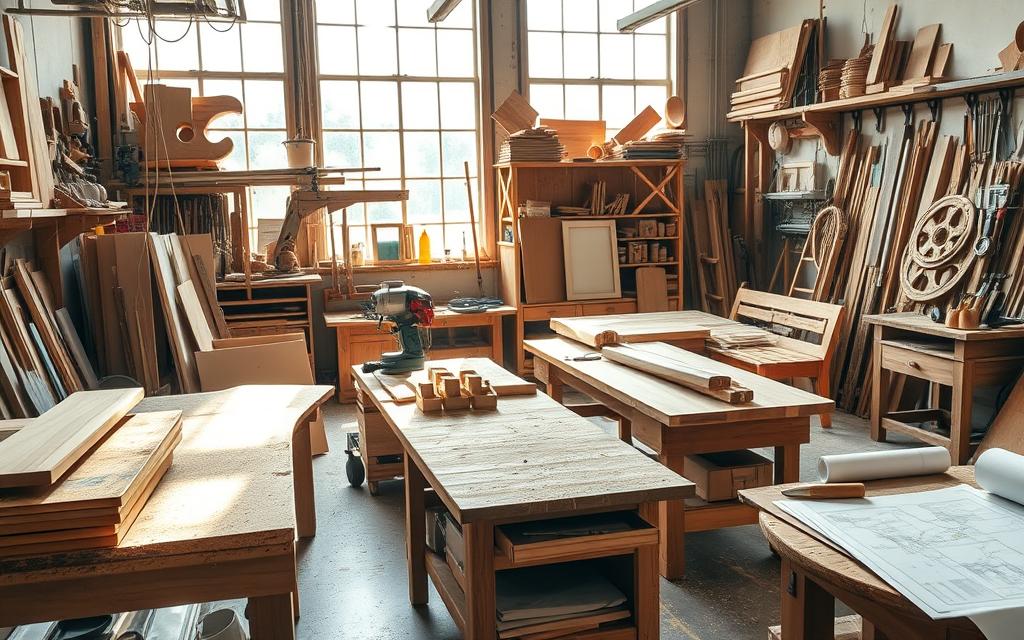
Turning your woodworking hobby into a business needs careful planning and creativity. Your wood crafts can grow into a profitable business. This change can make your hobby more than just a weekend activity.
First, find out what you’re best at in woodworking. Ask yourself these important questions:
- What woodworking designs do you excel at creating?
- Which wood crafts get the most attention from friends and family?
- What sets your work apart from others in woodworking?
To build a successful woodworking business, follow these steps:
- Make a detailed business plan
- Put together a portfolio of your top woodworking designs
- Set prices for your wood crafts
- Advertise your products online and at local craft shows
“Success in woodworking entrepreneurship comes from passion, skill, and smart business practices.”
Think about making money in different ways. This could include custom furniture, selling plans, teaching workshops, or running an online store. Your Teds Woodworking resources can help with new project ideas and improving your skills.
Turning your hobby into a business takes time, patience, and learning. Keep working on your skills and understanding what people want.
Conclusion
Teds Woodworking is a game-changer for anyone who loves making beautiful wooden projects. It offers 16,000 woodworking plans for every skill level. Whether you’re just starting or are very skilled, you’ll find something perfect.
Do you dream of making custom furniture or unique gifts? Or maybe you want to start a woodworking business? These plans have everything you need to succeed. They come with detailed guides, color-coded schematics, and views from different angles.
Buying Teds Woodworking means you can be as creative as you want. You get lifetime access, updates every month, and a 60-day money-back guarantee. This lets you make professional-quality projects. Start your woodworking journey today and see what you can create.
Are you ready to make your woodworking dreams come true? Check out the huge library of Teds Woodworking plans. Find the craftsman inside you.

Source Links
- Learn the World’s Most Comprehensive Woodworking Plans: Master Crafts! – Digital Store Zone – https://digitalstorezone.com/woodworking-plans/
- Teds Woodworking® | Official Website – https://tedswoodsworkiing.com/
- 5 Quick Easy Wood Projects for Beginners – https://medium.com/@gogas60000/5-quick-easy-wood-projects-for-beginners-a272f68e3bff
- Teds Woodworking/ instrument making Courses – https://www.craftcourses.com/providers/teds-woodworking-instrument-making-courses
- Ted’s Woodworking® | Ted McGrath – https://web-tedswoodworking.com/
- The future of seaweed – https://engineering.stanford.edu/news/future-seaweed
- Staff Directory – Virginia Military Institute – https://vmikeydets.com/staff-directory
- Orientation Letters – https://www.canyons.edu/academics/onlineeducation/orientationletters/index.php
- DIY Woodworking Projects for Small Spaces: Maximizing Functionality with Style – https://medium.com/@gogas60000/diy-woodworking-projects-for-small-spaces-maximizing-functionality-with-style-ee0db8ce5d15
- Enhancing Your Table Experience: Adding a Table Top Workshop – https://www.thebloodpressurely.com/tag/workshop/
- Print View – Course Catalog – https://www.hbs.edu/coursecatalog/print.html
- Hustle & Flowchart: Mastering Business & Enjoying the Journey – https://podcasts.apple.com/us/podcast/hustle-flowchart-mastering-business-enjoying-the-journey/id1199620245
- The Tim Ferriss Show Transcripts: Chris Sacca — How to Succeed by Living on Your Own Terms and Getting into Good Trouble (#790) – The Blog of Author Tim Ferriss – https://tim.blog/2025/01/24/chris-sacca-2-transcript/
- TedsWoodworking Review – Pro Woodworking Guides – https://prowoodworkingguides.com/reviews/tedswoodworking-the-ultimate-woodworking-companion/
- Teds Woodworking Reviews: 16,000 Plans – Scam or Legit? 2025 – https://dealsreview.in/teds-woodworking-review-16000-plans-scam-or-legit/
- Bioma Probiotics Reviews: (Does It Truly Facilitate Crafting Reduction?) – https://www.data-medics.com/forum/threads/bioma-probiotics-reviews-does-it-truly-facilitate-crafting-reduction.42584/




